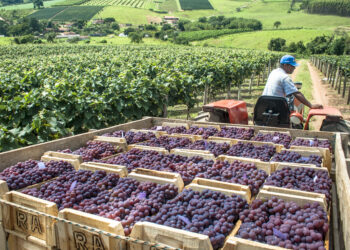I’m sure you can go to Rome without knowing what to eat and still leave happy. But, having travelled there often for the past five years, I think I could offer you some advice on what food to eat in Rome.
Some things to look for, some things to avoid, and some things you should try are unique to Roman cuisine.
Affiliate Disclaimer: Our blog posts may contain affiliate links. If you make a purchase through these links, we receive a modest commission at no extra cost to you. These commissions help us fund our team of travel writers, allowing us to continue providing you with the latest travel news, tips, and inspiration. Your support keeps this blog alive and thriving, and we appreciate it immensely. Thank you!
Some of the foods you must eat in Rome
Carbonara
Carbonara is pasta made with guanciale, egg, pepper, and pecorino cheese. I don’t know about you, but I’ve looked for guanciale in every grocery store everywhere, and I’ve never been able to find it. So most people looked at me like I was insane, and they didn’t understand what I was saying.
Guanciale has cured meat made from the cheek of a pig. Most people settle for bacon or pancetta. But I like to keep things traditional!
Carbonara is one of the ultimate Roman comfort foods, in my opinion.
Most restaurants do an excellent job with this dish, so you can’t go wrong with ordering it. This is a must-eat in Rome.
Some other popular Roman pastas are cacio e Pepe (cheese and pepper), amatriciana (if you like some spice), and gricia (like carbonara, without the egg).
If you want a comfortable dining experience with food that will not disappoint, I recommend Trattoria Casa Mia in Trastevere Via Della Renella.
Pizza
As far as pizzas go, there are Neapolitan pizza and Roman pizza. I tend to prefer Roman pizza. It’s super thin and lovely.
Keep things simple with a pizza Margherita, or get one with more toppings. Most Italians tend to keep things simple with their pizzas, but there are a few flavour combinations that you can’t find anywhere else.
One pizza I like is pizza capricciosa. It has prosciutto, mushroom, artichoke, black olives, and my favourite part, half a hard-boiled egg. Don’t knock it till you try it, people.
One other note is that when you order a whole pizza, it is enjoyed by one person. That’s right; you get the entire pizza to yourself! Buon appetito!
Pizza by the slice is also significant in Rome. You’ll see plenty of these shops as you walk around the city. You go in, look at the pizza options available, point to what you like, they will ask you how much, and charge you by the weight.
Alice Pizza is a chain restaurant you’ll see throughout Rome. They have reasonable prices and never disappoint.
Another restaurant you should know is called Bonci Pizzarium, made famous by the great Anthony Bourdain. They use premium ingredients here. They also experiment with unique flavour combinations and aren’t afraid to be non-traditional. It has become quite popular with tourists. Unfortunately, I find it extremely overpriced for pizza by the slice, BUT, when in Rome, visit Bonci Pizzarium in Via Della Meloria.

Supplì
While you’re getting your pizza by the slice, most places offer something called supplì. I cannot stress this enough: YOU NEED A SUPPLI. They changed my life.
Okay, enough of the dramatics, but it’s true! They are little balls of rice stuffed with cheese or ragu, breaded and deep-fried, and made to be eaten with your hands—the ultimate Roman street food.
I love supplì so much that I attempted to make my own at home. Of course, you can get these beautiful treats just about anywhere, but a restaurant loved by locals usually has a line around the block called Supplì Roma in Via di S. Francesco.
Gelato
Gelato is an obvious one, right? Now, gelato in Rome can be mind-blowing or disappointing. So don’t fall victim to the tourist trap Gelateria right by the prominent monuments you want to see. They usually aren’t delicious.
Some of my favourite gelaterias are:
- La Romana in Via Ostiense
- Old Bridge in Viale dei Bastioni di Michelangelo
- Oleg in Via di S. Cosimato
How do I know if the place is a tourist trap?
Prices
Now, the prices may change here and there, but I know better now. You can get the best gelato ever for €3. Carbonara should be around €8. Pizza Margherita is usually only €5. If you’re paying a lot more for these items, it’s probably very touristy.
Menus
Many restaurants nowadays are catering to more visitors, and therefore have menus in more than one language. But, I still look at the menu to see if it’s only in Italian. That’s a perfect and obvious way to know if a restaurant is more local than touristy. Look for places without English!

Location
To me, this sounds a bit obvious, but you’re going to pay more at a place if you’re sitting right in front of the Colosseum or the Pantheon. Sometimes, I understand it’s worth it for the view, the moment, the experience, but I do have to say that these places are catered to tourists. So you’ll probably leave having paid an arm and a leg for a mediocre pasta dish and some wine.
But, again, I understand if the moment calls for it, and by all means, enjoy your holiday!
If you don’t need the front-row view of the landmark, I recommend wandering the streets a few blocks away, and most likely, you’ll find something yummy, cheaper, and more local.
Staff
The wait staff are a dead giveaway for me. I don’t know about you, but I hate when people try too hard.
My first time in Rome, I was so overwhelmed walking in the centre and having all of these waiters standing outside the restaurants, shouting at me, “beautiful lady, come inside free champagne!” That might not happen to everyone, but I hate it!
And in my experience, the best restaurants don’t need to pay someone to lure customers inside. I hate being harassed, and I recommend you avoid these places at all costs.
More things to know
- In Rome, don’t be surprised if they charge you a fee for table service. Most places do this now. Because of this, many people do not tip. Of course, tipping is always a nice gesture, but it’s not required like you’re used to doing here in other countries.
- You usually have to pay for the water. It will come in a bottle, and they will ask if you want it natural or frizzante (sparkling).
- Other than water, the vino della casa (house wine) is usually cheap and good!
- Many places put a basket of bread on your table and charge you for it. If you don’t want it, tell your waiter, and they won’t charge you for it. Another note on bread is that while many people eat bread at the beginning of the meal, in Italy, most people use it to wipe up their pasta sauce after their meal. Do whatever you want, but I like knowing these things!
- When you’re ready to leave, you have to ask the waiter for the bill. They won’t just bring it over. It symbolizes that you are leaving, so in Italy, it’s saying, “time to leave now” when they bring it. It’s such a part of the culture to sit and enjoy each other’s company, so they don’t rush these things.
- If you’re with a large group, the restaurants often don’t split the bill. Be prepared with cash, or have one person pay on their card.
- Eating times are a bit different there. Lunch is usually later, like at 1-2. Apperitivo (drinks before dinner with little bites) is generally at 6-7. Dinner is anywhere from 8 or later.
All of that being said, I revert to my original statement in saying that I don’t think it’s possible to leave Rome without enjoying at least some of your dining experiences. Romans love to eat. And they are very good at it. So try everything you want and everything you can.













